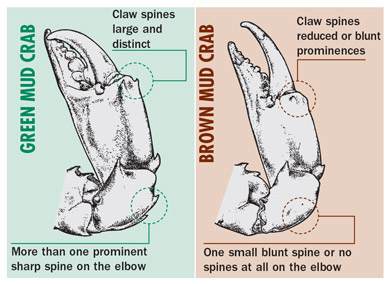
The North Coast Bioregion (Pilbara/Kimberley) runs from the Ashburton River (21° 46’ S and 114° 50’ E), south of Onslow to the WA/NT border.
In addition to the general fishing rules that can be found for our Statewide  Recreational fishing guide, please be aware of specific rules in this bioregion covering restricted and closed areas including:
Recreational fishing guide, please be aware of specific rules in this bioregion covering restricted and closed areas including:
marine protected areas, marine reserves, marine parks and marine management areas;
Fish Habitat Protection Areas and specific fishing closures such as wreck sites;
fishing for redclaw in Lake Kununurra;
cherabin (freshwater prawns); and
mud crabs.
Marine reserves
Marine reserves include marine nature reserves, marine parks and marine management areas. Marine parks and reserves are managed by the Department of Parks and Wildlife. However, we manage fishing inside and outside marine reserves. Marine reserves in the North Coast Bioregion include:
Closed areas
Fishing for redclaw in Lake Kununurra
Fishers on Lake Kununurra and the Ord River upstream of the diversion dam and downstream of Lake Argyle may use modified ‘opera house’ style traps to catch redclaw.
The following conditions apply:
a maximum of 10 traps per person or per boat;
traps must be not more than 70 cm long, 50 cm wide and 30 cm high;
traps may only have two entrances and each entrance funnel must be fitted with a rigid metal or plastic ring not exceeding 70 mm in diameter; and
each trap must be clearly labelled with the owner’s full name and address.

Cherabin (freshwater prawns)
You may only catch cherabin by using:
no more than six drop nets;
a single pole snare;
a single hand scoop net; or
a single throw net that has a length not exceeding three metres (measured from the centre retrieval line to the lead line) and a mesh of not more than 25 mm.
Identifying mud crabs
The two species of mud crab caught in WA are the green mud crab and the brown mud crab. You need to be able to tell them apart as they have different legal sizes.

There are additional rules around crabbing gear.
To make sure you know exactly what you are catching see our  Fish Identification Guide.
Fish Identification Guide.
Additional information is available if you are targeting specific species in the North Coast Bioregion:
There are also a number of recreational fisheries and fishing activities in the North Coast Bioregion which require a separate licence.
Make sure you are familiar with all the rules that apply in these areas and fishing activities before you make your trip. If you are unsure about the rules or need further advice, contact your local Department of Fisheries office.
North Coast Demersal Scalefish
The North Coast Demersal Scalefish Resource (NCSDR) comprises approximately 60 demersal scalefish species that inhabit the tropical waters of the North Coast Bioregion. Based on the stock ‘units’ considered for management purposes, the resource is separated into two main areas:
1. the Pilbara Demersal Scalefish Resource (PDSR)
2. the Kimberley Demersal Scalefish Resource (KDSR).
The species within the NCDSR are targeted by multiple commercial fisheries, and by recreational, charter and customary fishers.
The 2023 PDSR stock assessment shows red emperor has breached the limit reference level, triggering the need to implement management changes to recover the resource. DPIRD has developed a 20-year recovery plan, with input from Recfishwest, Marine Tourism WA, and the WA Fishing Industry Council.
The Pilbara Demersal Scalefish Resource Recovery Plan 2023-2043 (Phase 1) is available on our website.
The PDSR Science Update is available on our website.
The Fisheries Research Report is available on the DPIRD Digital Library.
Outcomes from the next PDSR stock assessment are scheduled to be available in 2026.